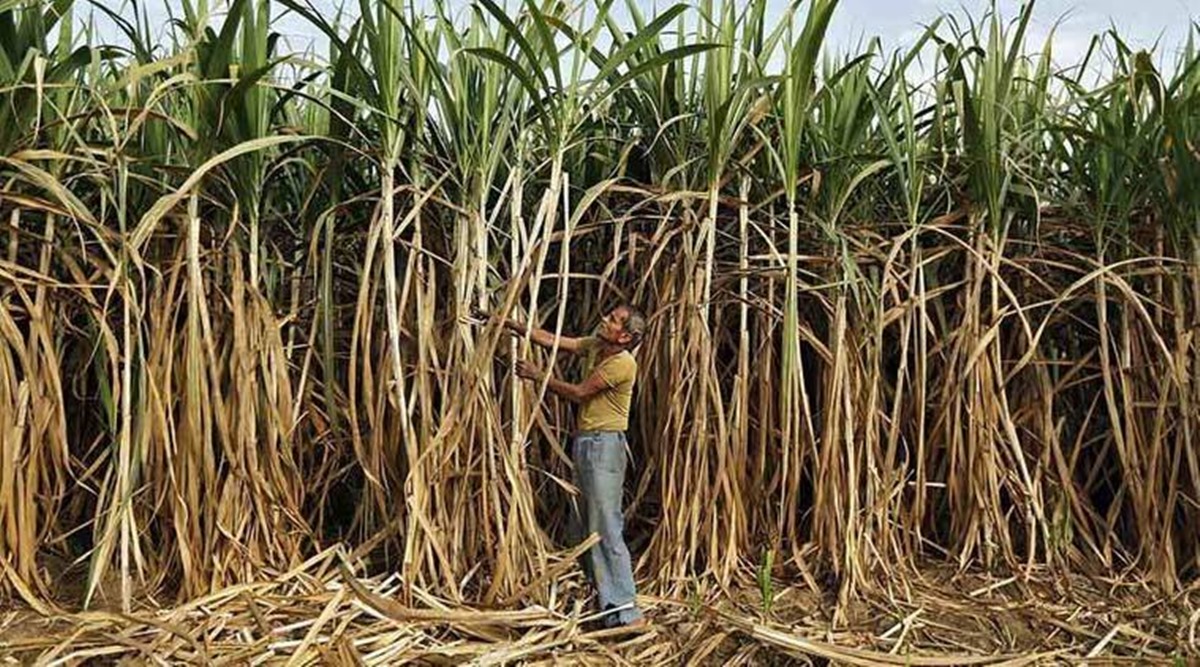 UP farmers have harvested over two-thirds of their ‘ratoon’ cane, while the next ‘plant’ crop will be ready only after February. (Representational)
UP farmers have harvested over two-thirds of their ‘ratoon’ cane, while the next ‘plant’ crop will be ready only after February. (Representational) The farmers’ agitation, until now, has been about Punjab and Haryana, wheat and paddy, and concerns over the future of minimum support price (MSP)-based procurement and agricultural produce market committee mandis.
But there’s one elephant in the room: Sugarcane. It is a crop grown more in Uttar Pradesh, not sold in mandis and, moreover, has a state advised price (SAP) that is statutory. Unlike MSP, sugar mills are legally bound to pay it.
Most farmers protesting at Ghazipur on the Delhi-UP border — as against those camping at Singhu and Tikri bordering Haryana — are sugarcane growers. But not withstanding the legal requirement for mills to pay SAP within 14 days of cane delivery, many haven’t received money even for the crop they supplied in the 2019-20 sugar season (October-September). And the Yogi Adityanath-led UP government is yet to announce the current season’s SAP, despite mills undertaking crushing operations since end-October.
Rakesh Tomar, a one-acre farmer from Kasimpur Kheri in Baraut tehsil of western UP’s Baghpat district, supplied 15 parchis (cane indents, each representing a buffalo buggi cartload of 18 quintals) to the Ramala cooperative sugar mill that crushed till June 2 in the 2019-20 season. He still hasn’t got payment for 4 parchis, which, at last season’s SAP of Rs 325 per quintal for early-maturing cane varieties, is worth Rs 23,400. This, even as he has supplied another 6 parchis so far in the new season since the start of crushing on October 28.
Anuj Kalkhande has come to Ghazipur after delivering a buggi of 20.05 quintals (net weight) to the Upper Doab Sugar Mill at Shamli on January 3. Last season, this 7-acre grower from Banat village of Shamli district and tehsil supplied 2,400 quintals to the mill that ran till June 14. “We have, however, not got any payment after April 6. For the 2020-21 season, our parchis are showing zero price and zero payment, even though our mill began crushing from November 5,” he said.
UP mills, as of January 5, owe farmers Rs 2,470 crore out of the Rs 35,898 crore SAP value of cane that they crushed in the 2019-20 season. They have further crushed 363.20 lakh tonnes of cane in the current season, which is worth about Rs 11,660 crore at last year’s SAP of Rs 315/quintal for general and Rs 325/quintal for early-maturing varieties. Of the Rs 11,660 crore, they have paid just Rs 2,427 crore as on date.
Non-payment of last season’s dues and no SAP being declared for 2020-21, with more than two months of crushing over, can emerge as a potential flashpoint in the ongoing farmers’ agitation.
“These protests are not about a single crop or state. It is about repealing the three farm laws and making MSP a legal right, which impacts all crops and farmers across India. But I will not rule out ganna (sugarcane) becoming an issue after January 8 if our talks with the government fail,” Rakesh Tikait, spokesperson of the Bhartiya Kisan Union, told The Indian Express.
The UP government is under pressure to raise the cane SAP, which has gone up by only Rs 10/quintal (from Rs 305 to Rs 315 for general varieties) during its term from 2017-18.
“The cane price was hiked from Rs 125 to Rs 240/quintal under Bahujan Samaj Party (2007-08 to 2011-12) and from Rs 240 to Rs 305/quintal under Samajwadi Party (2012-13 to 2016-17). This government has neither increased the SAP after 2017-18 nor forced mills to pay even that,” alleged Jitender Singh Hooda, an 8-acre farmer from Kheri Bairagi village in Shamli.
The UP government is said to be considering a Rs 10/quintal cane SAP rise for 2020-21. According to sources, the new price was supposed to be announced this week, but “they have decided to wait for the agitation to subside”.
UP farmers have harvested over two-thirds of their ‘ratoon’ cane, while the next ‘plant’ crop will be ready only after February. They have also completed sowing of wheat in the ratoon crop-vacated fields. “The rain in the last few days has helped save us one irrigation. It gives us enough time to be at Ghazipur,” Hooda said.
Punjab and Haryana farmers started arriving at the borders of Delhi after planting wheat by mid-November and the first round of urea application and irrigation. For UP farmers, December is peak season, as it coincides with ratoon cane harvesting and late sowing of wheat. But they, too, now have some spare time